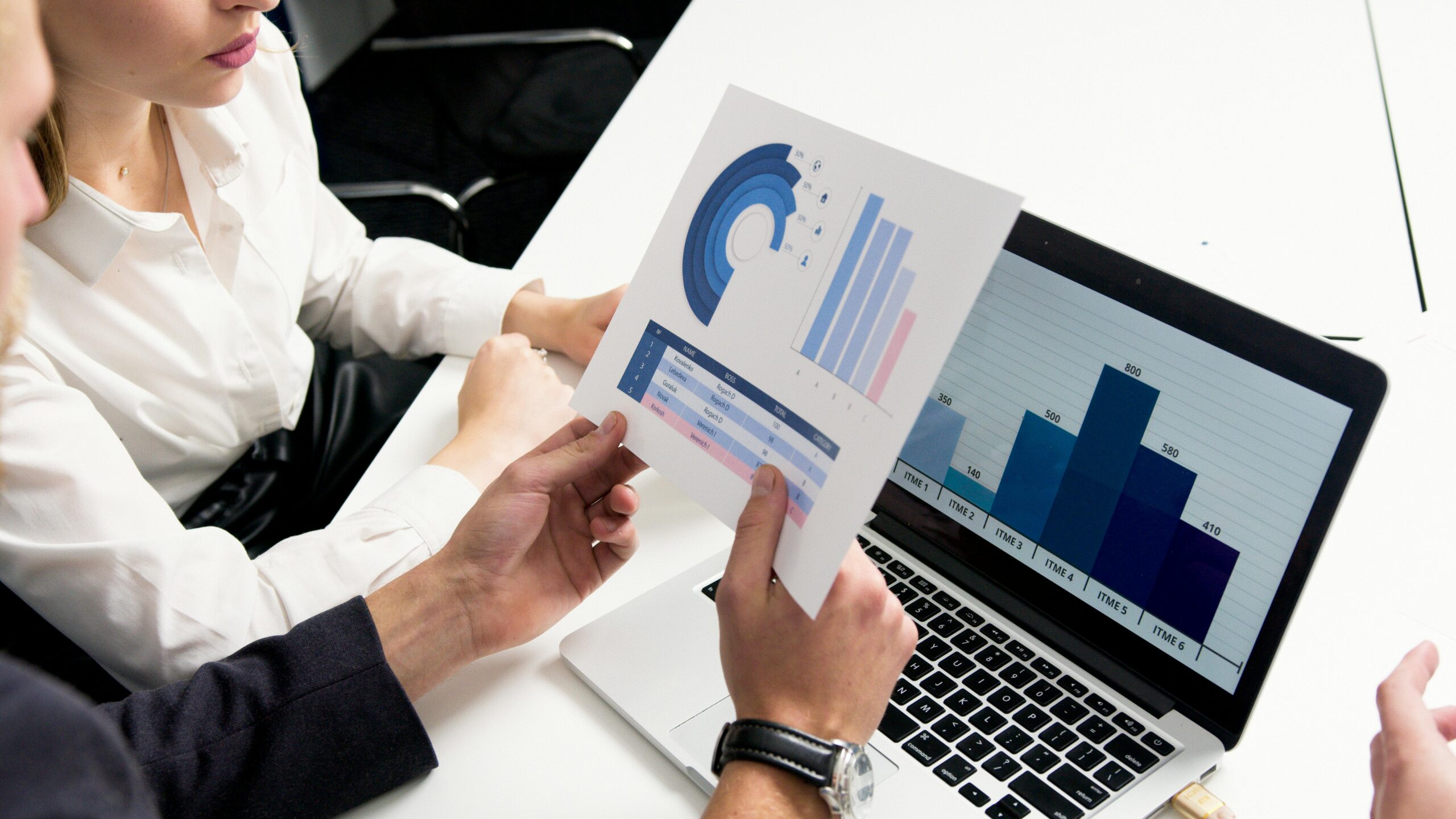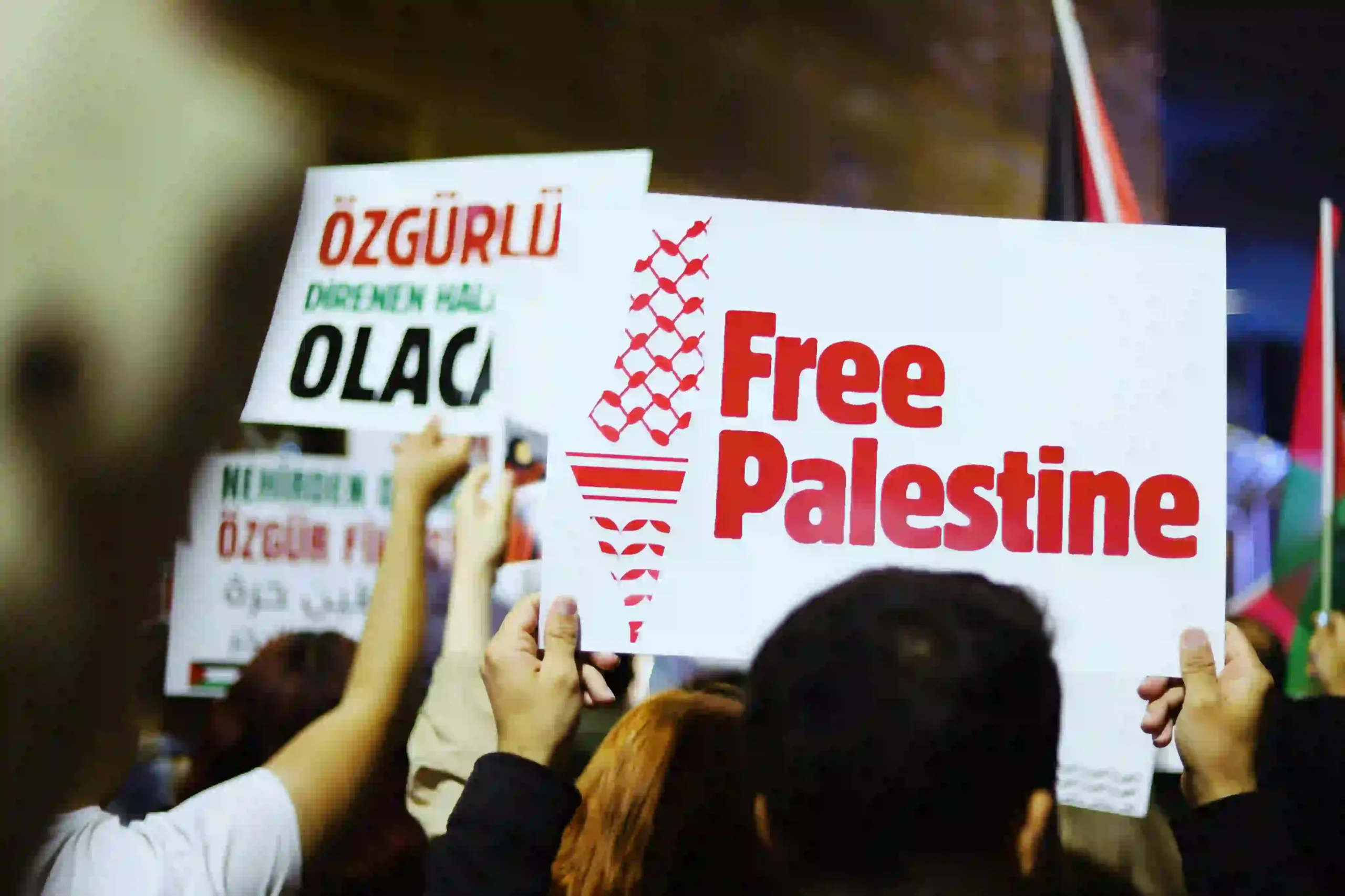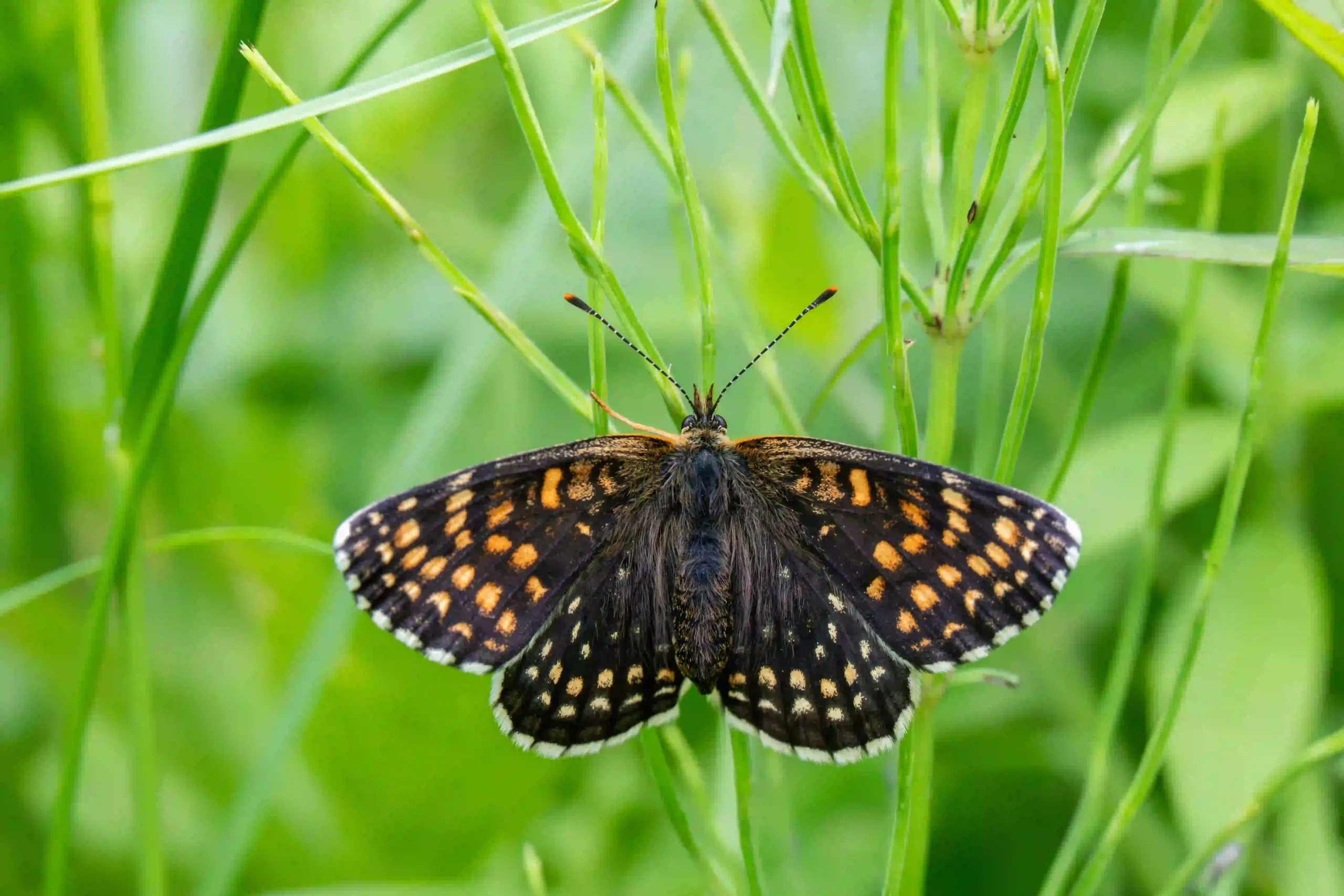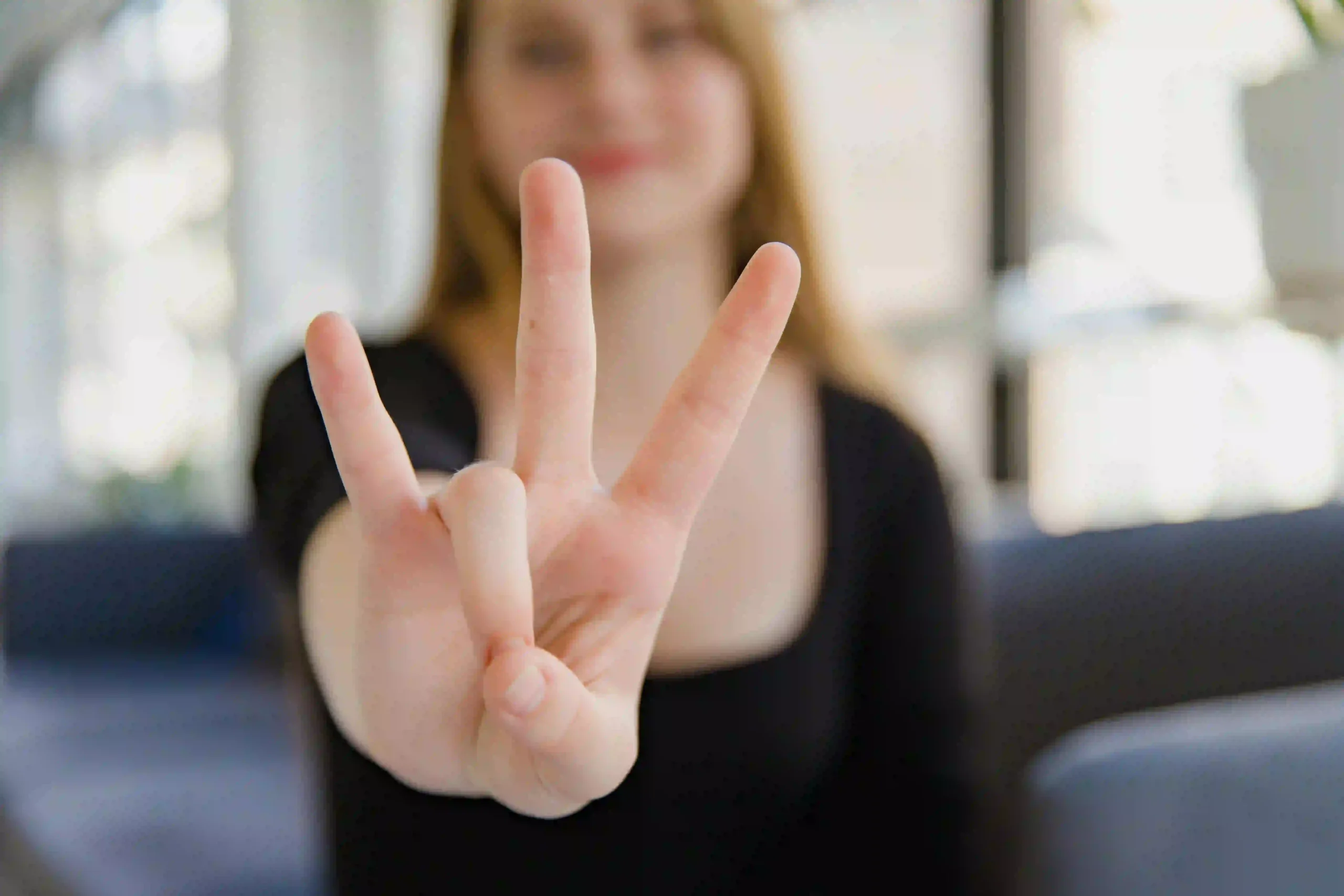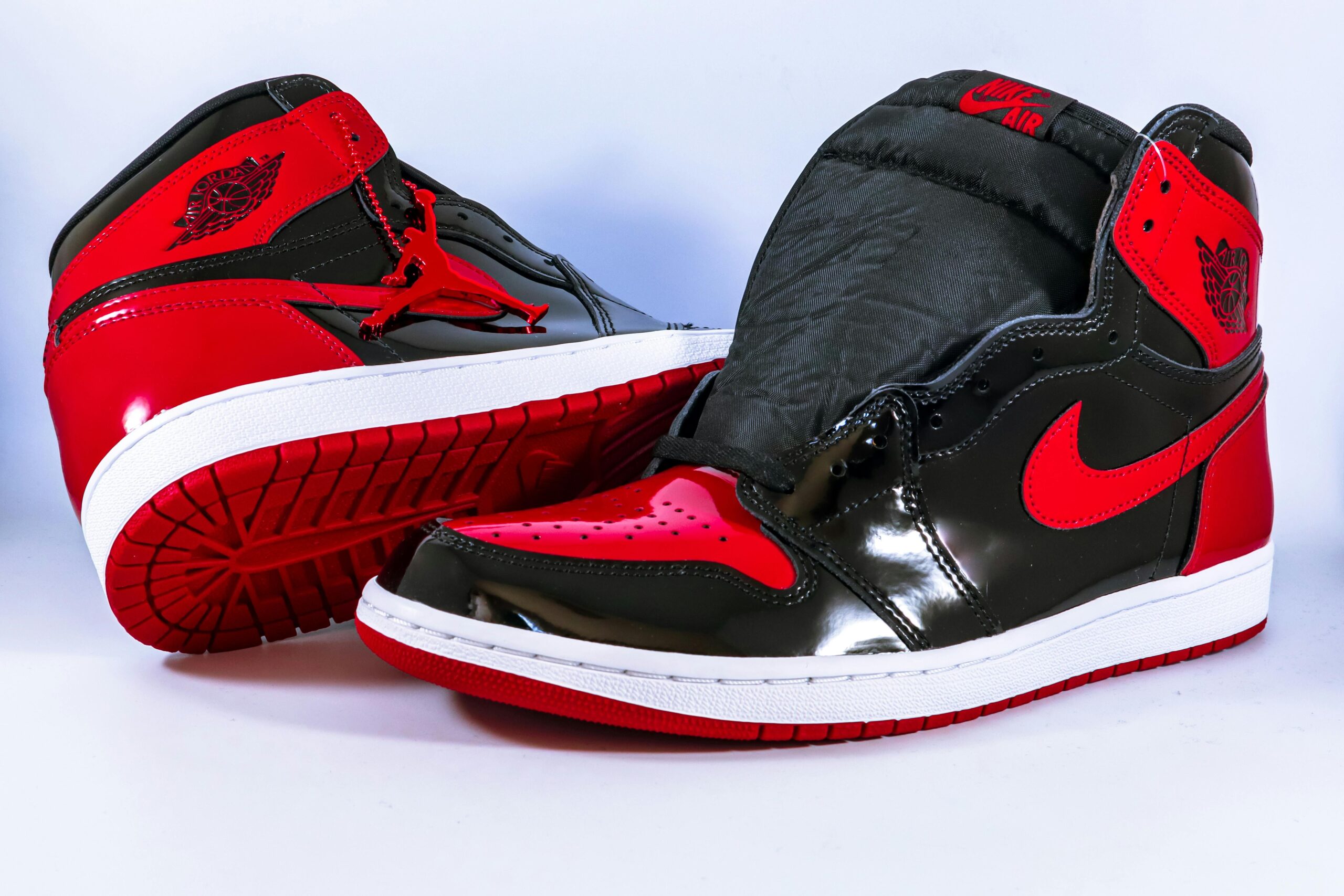The Chandler Fashion Center stands as a premier shopping destination, combining style, convenience, and entertainment under one roof. With a vast array of stores, dining options, and entertainment facilities, it offers an unparalleled shopping experience for visitors of all tastes and preferences. This article will delve into what makes this center a must-visit, providing insights into its features, attractions, and services. A Shopper’s Paradise: Stores Galore From high-end brands to affordable fashion, the Chandler Fashion Center caters to every shopper’s needs. The wide variety of stores ensures that you can find everything from the latest trends in clothing and accessories to electronics and home goods. Whether you’re looking for luxury brands or everyday essentials, the center has it all. The spacious layout and organized sections make it easy to navigate and find your favorite stores. Culinary Delights: Dining Options Food enthusiasts will find the dining options at the Chandler Fashion Center truly satisfying. The center features an impressive lineup of restaurants, cafes, and quick bites to suit all palates. From gourmet meals at sit-down restaurants to on-the-go snacks, there’s something for everyone. Visitors can enjoy international cuisines, local flavors, and even sweet treats, making it an ideal place to relax and recharge during a shopping spree. Entertainment for All Ages The Chandler Fashion Center isn’t just about shopping; it’s also a hub for entertainment. With options such as movie theaters, arcades, and live events, there’s always something happening. Families can enjoy a fun day out, while individuals can unwind with engaging activities. The entertainment options make it a well-rounded destination that caters to all age groups and interests. Convenient Amenities Visitors to the Chandler Fashion Center benefit from a range of convenient amenities designed to enhance their experience. These include: Ample Parking: Spacious parking lots make it easy to find a spot, even on busy days. Customer Service Desks: Assistance is readily available for directions, gift cards, and general inquiries. Stroller and Wheelchair Rentals: Accessibility is a priority, ensuring comfort for all visitors. Wi-Fi Access: Stay connected while you shop with free Wi-Fi throughout the center. These thoughtful features ensure that every visit is smooth and enjoyable. Seasonal Events and Promotions One of the highlights of the Chandler Fashion Center is its calendar of seasonal events and promotions. From holiday-themed activities to exclusive sales, there’s always something exciting happening. These events not only enhance the shopping experience but also provide opportunities to save on your favorite brands. Be sure to check the center’s event schedule to make the most of your visit. Why the Chandler Fashion Center Stands Out The Chandler Fashion Center distinguishes itself through its unique blend of retail, dining, and entertainment options. It’s more than just a shopping mall; it’s a community hub where people come to shop, dine, and spend quality time. Its commitment to customer satisfaction, variety of offerings, and modern amenities make it a standout destination. Tips for an Enjoyable Visit Maximize your experience at the Chandler Fashion Center with these helpful tips: Plan Ahead: Check the store directory and event schedule online before your visit. Visit During Off-Peak Hours: Weekday mornings and afternoons are typically less crowded. Take Breaks: Use the comfortable seating areas to relax and recharge. Explore Beyond Shopping: Don’t miss the dining and entertainment options available. With these tips, your visit is sure to be both productive and enjoyable. Sustainability Initiatives The Chandler Fashion Center is committed to sustainability and eco-friendly practices. Initiatives include energy-efficient lighting, recycling programs, and efforts to reduce waste. These measures reflect the center’s dedication to creating a greener future while maintaining a high standard of service for visitors. Customer Reviews and Testimonials Shoppers and visitors frequently praise the Chandler Fashion Center for its variety and convenience. Here are some recurring themes from customer feedback: Diverse Store Selection: Visitors appreciate the wide range of stores catering to all preferences and budgets. Clean and Well-Maintained: The center’s cleanliness and organized layout receive consistent accolades. Friendly Staff: Customer service teams are known for their helpfulness and professionalism. Family-Friendly Environment: Amenities like play areas and stroller rentals make it a hit with families. These positive experiences underscore why the Chandler Fashion Center is a favorite destination. What’s New? The Chandler Fashion Center continually evolves to meet the needs of its visitors. Recent additions include new stores, updated dining options, and enhanced amenities. These updates ensure that the center remains a modern and vibrant destination that appeals to everyone. Final Thoughts The Chandler Fashion Center is more than just a shopping mall; it’s a destination where style, convenience, and entertainment converge. With its wide variety of stores, delicious dining options, and engaging entertainment, it offers an experience like no other. Whether you’re planning a shopping spree, a family outing, or simply a day of leisure, the Chandler Fashion Center has something special for you. Make it your next destination and discover all it has to offer! FAQs Q: What stores can I find at the Chandler Fashion Center? ANS: Chandler Fashion Center offers a diverse mix of stores, ranging from high-end brands to everyday essentials. Whether you’re looking for fashion, electronics, or home goods, you’ll find something to suit your needs. Q: Are there dining options available at the Chandler Fashion Center? ANS: Absolutely! The center boasts a variety of dining options, including sit-down restaurants, casual cafes, and quick bites, catering to all tastes and preferences. Q: Does the Chandler Fashion Center provide parking or other amenities? ANS: Yes, the center features ample parking, free Wi-Fi, stroller and wheelchair rentals, and customer service desks to ensure a comfortable and convenient shopping experience.
The Future of Legal Advertising: AI in Digital Marketing
In today’s digital age, the legal industry is becoming increasingly competitive, and law firms need to adapt to stay ahead. The evolving landscape of Digital Marketing Law Firms is no longer just a tool for tech companies and startups. It has become a necessity for law firms looking to attract clients and build their reputation. As we head 2025 digital marketing strategies are continuously evolving, presenting new opportunities and challenges for law firms. Companies using Ai for marketing Maximum companies using AI for digital marketing. It becomes beneficial and gives the fastest response for any query. Even if we want some different things like any type of code which we want to integrate in our task, It is the main resource to provide us with the fastest service. Using the Ai is good for us to grow our business. I’ve tried many times to make a good decision for my company’s growth CARRY INFORMATION, But I’m stuck in many problems. Let me tell you more about my success. Startup with Ai marketing In the startup, I have hired many employees to resolve our company issues. I’ve visited many industries and companies to see how they work and how they become a success in growth. Some companies can not allow me to visit their premises. I was depressed about my own business. I ever thought about that It’s Not a fairy and how I can grow up and show to the world. I struggle many times again and again. It looks like a burden on me and I can not imagine who can give me the right way. Resolve the Issues through Ai Through Ai our team can make a good decision for my company. A little thing they note in our website carryinformation. They talked about the use of “AI in digital marketing” section of the company website. I was curious about this decision, because I thought that AI is not trusted and it destroys my little life, and my little life is only my company. A lot of requests and a lot of research make my decision and involve the AI in my business. Now, we have observed our company status. The potential is greater than before. I am very happy to see my company grow. Let me tell you the growth story. Using Ai for company growth For the company’s growth I have involved artificial intelligence and got good results. This was my first attempt to expand my business through artificial intelligence. It takes away from the lower position to the highest. The competitors were amazed to see the ranking and give good feedback to our company. There is some feedback from other competitors. Your website is well-structured and user-friendly, offering clear navigation and a professional design. The content is informative, engaging, and tailored to your audience’s needs, reflecting a strong understanding of their interests. Clean Layout: The design is visually appealing and ensures easy navigation. Relevant Content: The articles and pages align with the audience’s expectations, providing valuable insights. Call-to-Action (CTA): Clear CTAs encourage user interaction and engagement. Mobile Responsiveness: The site functions well on various devices, enhancing accessibility. Improved Lead Generation by Ai AI-driven platforms streamline the lead-generation process by identifying and qualifying potential clients. Chatbots, for example, can engage with website visitors in real-time, answering basic inquiries and gathering essential information. These tools save time and ensure that high-quality leads are directed to the appropriate legal teams for follow-up. Cost Efficiency and Automation, Ai AI-driven automation reduces the time and resources required to manage advertising campaigns. From scheduling social media posts to bidding on pay-per-click (PPC) ads, AI simplifies complex processes, allowing legal professionals to focus on their core expertise. Additionally, AI’s precision minimizes wasted ad spend, ensuring budgets are used efficiently. Conclusion AI is redefining the landscape of legal advertising, offering tools that enhance targeting, streamline operations, and improve client engagement. The future of legal advertising lies in leveraging AI to create smarter, more impactful campaigns that connect with clients in meaningful ways.
Political Instability and Conflict
Political instability is a crisis situation within a country that can have numerous causes developing over time or one issue at a very fast pace. It can also be violent in nature. Political instability may be the result of a lack of consensus, a failure to materialize the sense of ‘nationhood’ in the citizenry, dictatorship, economic instability or foreign influence. Frequent changes in governments (or attempts to do so), internal dissensions and labour disputes, involvement in border clashes with neighbouring countries or a rise in violence are other possible factors that can cause political instability. Political Stability Political stability is the ability for a government to provide essential services. It is also related to predictability in that a stable government acts in ways that are expected by the people. Stable governance allows the basic needs of the population to be met, minority rights are guaranteed, and conflicts are managed peacefully through inclusive political processes. It also provides a framework for citizens to participate in politics and an independent media. Stable governments often develop a strong foundation for good governance and build the public’s trust in their institutions. They also provide social cohesion and ensure economic development. These countries are also likely to be more tolerant, inclusive and progressive. Dictatorship Dictatorship is a type of government in which a single person or party has complete control over their country. This means that whatever they say goes, no matter what their citizens think. Dictators have complete power over the armed forces and can use force to keep their people in line. They also often use propaganda to influence their people. In dictatorships, there is no importance given to the individual and he is not allowed to have adequate liberty to develop his personality. In this system, there is a tendency for rebellion and revolution, which can lead to instability in the country. Dictators rely on their own charisma to maintain control, placing loyal followers in positions of power. They also foster cult-like feelings of loyalty and nationalism among their people. They are supported by the military and are often backed by a group of powerful people. Coup d’etat Coup d’etat is a type of political upheaval that takes place when a small group seizes state power. It is different from other types of civil unrest like revolutions, which often involve broad majority support, and war, which usually involves large numbers of deaths. There are a variety of theories that attempt to explain why and where coups occur. Some theories are concerned with macro social and economic factors, such as population size or the quality of political institutions, while others focus on military elites or psychological qualities of coup leaders. The battle approach, most associated with Edward Luttwak (Coup D’etat – A Practical Handbook), emphasizes tactics and the comparative strength of rebels and loyalists, assuming that the stronger side will win. However, many coups d’etat do not resemble battles and do not involve a great deal of violence. In fact, Napoleon’s 1799 capture of Paris is thought to have gone off without a single death. Civil War A civil war is a violent conflict within a country fought by organized groups that aim to take power at the center or in a region, or to force a major change in policy. Scholars typically use two criteria to determine whether a conflict is a civil war: it must involve at least 1,000 dead on both sides, and it must be fought over a long period of time. In addition, the groups must be from the same country and fighting for control of the political center or a separatist state, or to force a major change in government policies. Other factors, such as the status of international borders, may also play a role in the outbreak and evolution of civil conflicts. Borders formally delineate states’ sovereignty, and they generate different constraints and opportunities for governments and rebels. FAQs Q: What are the effects of political conflict? Ans: Conflicts often have a basis in economics and inequality, destabilising communities by slowing economic development and increasing insecurity, and therefore have a profound effect in the developing world[17]. Q: What is the meaning of political stability? Ans: Political stability is a situation characterised by the preservation of an intact and smoothly functioning government or political system, avoiding significant disruptions or changes over an extended duration. Q: How did conflict affect the political climate? Ans: In Europe, conflicts such as the Napoleonic Wars and the First World War led to political instability, territorial changes, and the rise of new political ideologies.
How to Cope With the COVID-19 Pandemic
The global health community faces an unprecedented challenge in the coming months. As the world continues to cope with the COVID-19 pandemic, governments must focus on managing a disease that is still highly contagious and evolving. As COVID-19 mortality declines, a transition toward normalcy may begin. That would mean that the disease would no longer be exceptional in society, and public-health measures could be phased out as the virus adapted to become part of a baseline. Human-to-Human Transmission The viruses that cause COVID-19 and seasonal flu can spread between people who are in close contact with one another. They are spread mainly by large and small virus-containing particles that are expelled when infected people cough, sneeze or talk. However, the new coronavirus that causes the COVID-19 Pandemic may have a different route of transmission. It has been found to infect bats and some species of domestic animals, including hamsters, mink and North American white-tailed deer. During the SARS outbreak in 2003, bats were a major reservoir of the virus that caused SARS. Other natural hosts for coronaviruses include civet cats and camels, which have also transmitted coronaviruses that have caused severe illness in humans. The first COVID-19 cases occurred in China, where the virus emerged in December 2019. It has since been confirmed to be spreading worldwide. During the outbreak, WHO has been working to understand and learn more about the epidemic and how to best respond to it. Animal-to-Human Transmission Many diseases are zoonotic, meaning that they can be transmitted from animals to humans. Several animal-to-human transmissions have occurred during the COVID-19 Pandemic, including two cats living in different New York households, and a mink farm in Hong Kong. The most common way that diseases pass between people is through skin-to-skin contact, or by biting or scratching each other. This is usually not a serious health concern, but it can be dangerous if you are ill and haven’t had a chance to wash your hands. Although most zoonotic diseases can’t be passed from animals to humans, some do. For example, rabies is a disease that can be spread between mammals, especially those with weak immune systems, such as dogs and cats. Animal-to-Animal Transmission Viruses that jump from animals to people are called zoonotic. They can cause human infections that are not typically seen in humans (for example, swine flu and bird flu). Animal-to-animal transmission is particularly likely to occur in countries that are rapidly changing natural habitats into agricultural land. These changes may be caused by habitat destruction, intensified agriculture to meet growing human needs, and illegal wildlife trade and hunting. Scientists have documented three instances where COVID-19 infection has moved from animals to humans: a mink in the Netherlands, hamsters on a farm in Denmark, and one possible case of deer to humans. No dangerous variants have emerged as a result of these events, which suggests that COVID-19 infection has mostly been spread from humans to animals during the pandemic. However, the fact that COVID-19 can spread from animals to humans suggests that a one-health approach is needed to prevent disease from becoming a serious zoonotic threat in the future. This includes promoting good hand hygiene after contact with livestock or wildlife. Human-to-Animal Transmission The COVID-19 Pandemic has spread globally from humans to a range of animals, including cats, dogs, ferrets, and hamsters. This is called animal-to-animal transmission and is not something that is unusual. Humans may become infected through direct contact with infected animals, or by indirect contact with surfaces and objects that have been contaminated with germs. These include aquarium tank water, pet habitats, chicken coops, barns, and food dishes. People can also get sick from consuming contaminated food or drink, such as unpasteurised milk, undercooked meat and eggs, or raw fruits and vegetables that have been contaminated with feces from infected animals. In addition to direct contact, human activities that alter the environment can increase the risk of disease spillovers from wildlife to people, referred to as zoonotic transmission (see below). Scientists believe that most major outbreaks of diseases serious enough to be deemed epidemics or pandemics begin with animal populations. For example, the H5N1 flu in 1997 was believed to have started with wild birds, and SARS-1 in 2002 began with civets, a catlike mammal. FAQs Q: How to cope after COVID? Ans: Talk to people you trust or a health care professional. Writing your worries down can help. Try practising relaxed breathing, or try a relaxation exercise, or some mindfulness, whichever one relaxes you the most. Q: How did people cope during lockdown? Ans: Stay socially connected: Social distancing can bring about feelings of loneliness particularly among people who live alone. Q: How did COVID affect mental health? Ans: These symptoms can include neurological symptoms such as difficulty thinking or concentrating, sleep problems, and depression or anxiety.
Environmental Degradation and Biodiversity Loss
Environmental degradation and biodiversity loss are the deterioration of natural environments and the reduction of biological diversity. Degradation is caused by a number of factors such as pollution, habitat loss and climate change. Biodiversity loss occurs when the number, genetic diversity and variety of species declines in a particular area or planet. It can be a natural process or an accelerated one due to human activities. Habitat Loss Habitat loss, which is the alteration of a natural habitat for human use, is one of the primary drivers of biodiversity loss. It is associated with deforestation and invasive species. The destruction of forests, wetlands, grasslands, and other natural areas has caused a rapid decline in the number of mammal, bird, fish, reptile, and amphibian populations around the world since 1970. Many of these losses are also driven by climate change, which can affect the growth rate of plants and animals and reduce their ability to adapt to changes in temperatures and precipitation patterns. Habitat loss also fragments ecosystems, reducing their size and the connections that provide space for species to survive and thrive. This can make it difficult for migratory species to find food and mates along their routes. Invasive Species When plants or animals become invasive, they threaten biodiversity and ecosystems. They can also negatively impact human activities such as clogging navigable waterways, weakening flood control structures and damaging crops, or introducing diseases to animals that are raised or harvested commercially. Invasive species are introduced into new environments where they can compete for resources such as nutrients, light, physical space, water and food. In many cases, they are able to outcompete native species because they have biological properties that make them more suited for their new environment than native plant or animal species. Invasive species can be spread through a variety of ways, including moving watercraft from one waterbody to another, roadside mowing, importing firewood and moving construction, logging or recreational gear that is not cleaned off mud. For example, purple loosestrife was introduced from Europe to North America more than 200 years ago in bilge water on ships and is now a common weed that threatens natural wetlands all over the world. Air Pollution Air pollution is caused by a wide range of sources, including the burning of fossil fuels, such as coal, oil and gas. It can affect human health and the environment. Air pollution includes the emission of particulate matter and ozone (a key component of smog). Particulate matters are tiny particles that can be breathed in, or deposited on surfaces or in the soil. Ozone is a harmful gaseous pollutant that forms when volatile organic compounds, such as gasoline and solvents, react with nitrogen dioxide. Both pollutants contribute to climate change and the destruction of the ozone layer that protects us from harmful ultraviolet radiation. Additionally, both gases cause multiple adverse respiratory effects. They are associated with increases in hospital admissions and emergency department visits for respiratory illness. Water Pollution Water pollution occurs when pollutants, such as sewage, chemicals or trash, enter rivers, streams, lakes, ponds, and oceans to the point where they interfere with beneficial use of the water or with the natural functioning of the ecosystem. The most common sources of water pollution are industrial wastes, agriculture runoff, and stormwater runoff. They can contaminate groundwater, lakes and rivers with toxic chemicals that can harm aquatic life. These chemicals include pesticides, fungicides, and herbicides. They also contain heavy metals, which are harmful to aquatic life and can harm human health when absorbed into the body. These chemicals can also change the temperature of freshwater, reducing oxygen levels and making them unsafe for marine life. This happens when companies dump chemical waste into nearby water systems without proper treatment. FAQs Q: What is the meaning of biodiversity loss? Ans: Biodiversity loss refers to the reduction of any aspect of biological diversity (i.e., diversity at the genetic, species and ecosystem levels) in a particular area through death (including extinction), destruction or manual removal; it can refer to many scales, from global extinctions to population extinctions, Q: What are the main causes of loss of biodiversity? Ans: Main reasons for biodiversity loss Changes in land use (e.g. deforestation, intensive mono-culture, urbanisation) Direct exploitation such as hunting and over-fishing. Climate change. Pollution. Invasive alien species. Q: What is the degradation of biodiversity? Ans: Biodiversity loss refers to the decline or disappearance of biological diversity, understood as the variety of living things that inhabit the planet, its different levels of biological organisation and their respective genetic variability, as well as the natural patterns present in ecosystems.
Understanding Social and Economic Inequality
Inequality is a key issue that affects people worldwide. It can have a significant impact on poverty levels, growth and human rights. Poverty and inequality vary widely across countries, with many factors affecting the extent of these differences. It is important to fight inequality in a way that fits each country’s circumstances and goals. Poverty Poverty is a social and economic condition that occurs when a person or group lacks the resources to meet basic needs. This can include a person’s access to healthcare, education, housing, and other services that help them live a healthy life. Many factors can contribute to poverty, including discrimination, racism, social disadvantage, and more. These factors can trap people in a cycle that leads to long-term poverty. In the United States, income inequality has increased since 1980. This has happened as businesses replaced lower-skilled workers with technology requiring higher skills. It has also occurred as globalization made it easier to outsource jobs. Structural racism has made it harder for Black Americans to accumulate wealth and earn higher incomes. There are a number of ways to combat poverty and economic inequality, such as enhancing education, improving job opportunities, and providing financial assistance. These programs can increase an individual’s income and help them climb up the social ladder. Income Inequality Income inequality is a significant disparity in the distribution of income between individuals, groups, populations, social classes, or countries. A typical measure is the Gini coefficient, which ranges from 0 to 1, with 0 corresponding to precise equality and 1 a state of total inequality. Rising income inequality can have a number of direct effects on people’s lives, such as changes in their own income. It can also have indirect effects, such as changes in a society’s political and economic institutions, social cohesion, culture, and norms of behavior. In the United States, inequality has been on the rise for more than 30 years, and is now a major concern among researchers, policymakers, and the public. Various factors, including technological change, globalization, the decline of labor unions, and eroding minimum wages, have been linked to this trend. Despite its negative consequences, rising income inequality is not inevitable or irreversible. It can be reversed through changes in policies and practices that promote social mobility, such as higher taxes on the rich and increased government spending on social programs. Racial Inequality Racial inequality is a term used to describe the differences in social, economic and cultural advantages that are granted or denied to different races within a society. It can be a result of historic oppression, inequality of inheritance, or racism and prejudice, especially against minority groups. In the United States, racial inequality is manifested in social disadvantages such as lower levels of home ownership and higher rates of poverty among Black Americans than Whites. This largely stems from a long history of systemic racism, such as the policy known as redlining that denied mortgages to Black sharecroppers in the 1930s. Inequality also affects people’s lives in other ways, such as stifling intergenerational mobility – the ability for someone to reach higher levels of economic success than their parents. Research has shown that for a child born in 1940, they had about a 90% chance of out-earning their parents; but by 1980, this chance had fallen to half. Gender Inequality Gender inequality is a major problem in the world. It affects people’s lives in a variety of ways, including their ability to get a job, receive health care and live safely. Inequality can be caused by a range of factors, including discrimination, biological differences and cultural norms. It is especially prevalent in poor countries, where women and girls are often denied education and have little power over the decisions in their homes. When women are treated equally, they can have better job opportunities and more income. This improves their economic situation and enables them to better feed and educate their children. It can also increase their community and nation’s GDP. FAQs Q: What is social and economic inequality? Ans: Economic inequality is the unequal distribution of income and opportunity between different groups in society. Q: How do you understand social inequality? Ans: Social inequality is characterized by the existence of unequal opportunities and rewards for different social positions or statuses within a group or society. Q: What is the meaning of social and economic equality? Ans: The term socio-economic equality describes a theoretical circumstance or goal where all people have an equal social (position, rank, or importance) and economic (income, pay, and wealth) status.
Which Fashion Trend Was Most Popular in the 1980s?
In this article, you will learn about the fashion trends that made the 1980s so memorable. These included Acid-wash jeans, High-waisted pants, layered socks, and a variety of colorful pieces. Which fashion trend was most popular in the 1980s? There are several factors to consider. This article will provide some examples to help you make up your mind. Ultimately, the answer will depend on your taste and style. High-waisted clothing High-waisted clothing was a popular trend during the 1980s. The trend was popular thanks to a variety of reasons. For one, it’s a more feminine style, which made women feel more attractive. It was also made popular by actresses like Tina Turner. For another, it was a trend that was popular among women who were trying to stay fit. Women who were looking for ways to look slim and toned also wore high-waisted clothing. The trend began in the early 80s, when high-waisted jeans became popular. They were also comfortable and stylish, which meant that they were a popular item of clothing for many women. These jeans were also popular because they fit in with the denim fashion trend of the time. Although many 80s fashion trends have fallen by the wayside, there are still a number of pieces that have remained popular, including high-waisted jeans. Colorful clothing Colorful clothing was big in the 1980s and a key part of that decade’s style. Bright colors and patterns were in vogue and complemented by bold shoulder pads. The fashion trend sported a soft, New Romantics style that was both feminine and sporty. Many of the styles from the ’80s were inspired by dance wear and featured off-the-shoulder tops and pants. Other popular styles of the decade included blazers, pastel colors, and leather trench coats. The bright colors and patterns of 80s clothing complemented the era’s more experimental designs. These styles were especially popular in the 1980s, where more women began working. In the early 1980s, working women were no longer seen as unusual and started dressing for their profession. Some popular clothes for women during this time included knee-length skirts, wide-legged slacks, and matching blazers. Shoes were also very popular, with many women wearing kitten-heeled shoes. Later in the decade, however, manufacturers improved these shoes by adding flexible soles and a more supportive heel. Acid-wash jeans The acid-washed look was one of the most iconic fashion trends of the 1980s. The style originated in the early 80s, with roots in the surf culture of the 1960s. The Rifle Jeans Company patented the modern acid-washed look in 1986. Since then, the style has spread to other garments and fashion accessories. Acid-washed jeans became popular in the 1980s because they evoke an attitude of rebellion. Originally, this look was limited to a small subculture of surfers in California, but it quickly spread to the punk subculture. The jeans were a staple of music videos, worn by the protagonists of music videos. Layered socks Layered socks were a popular trend in the 80s, but mostly among girls. The trend was popularized by television shows and was accompanied by a variety of fashion accessories. The classic 80s look would include a brightly colored top and mini skirt, as well as a pair of slouch socks. The fashion trend was most popularized by punk rock star Punky Brewster. Brewster wore three pairs of socks with the third pair overlapped. He paired his socks with red Keds that were tied with blue and white shoe strings. This style was popular and was quickly copied by many people. Leotards Leotards were an important part of the 80s fashion scene. They were made of stretchy fabric that allowed women to move easily. They were often worn with colored leggings or tights and soft ballet slippers. Some women chose to add gems to their leotards. It was also the era of DIY fashion, which was very popular during this decade. Most people could make something from old clothes, and it was easy to create new and unique looks. Bodysuits Bodysuits were a very popular fashion trend in the 1980s. They were made popular by celebrities like Madonna and were often worn alone or layered under other clothes. They were quite shocking to conservative relatives and they were often made from lingerie colors. Now, this fashion trend has resurfaced as an evening wear option. In the 1980s, many people had long and curly hair and wore shoulder pads. Women also sported oversized blazers in bold colors. They could be worn over top of any outfit. In addition, sheer tights became very popular in the 1980s, in many bright colors. These are now back in a more classic black. Puffy sleeves Puffy sleeves have a long history and are a throwback to the Renaissance period of Europe. These sleeves were named after the heroine of Shakespeare’s “Romeo and Juliet.” Known for their puffy appearance, the sleeve consists of a large tuft near the shoulder that narrows to a point at the arm’s length. The 1980s were the decade that saw the most popular puff sleeve fashions. Puffy sleeves were popular during the 1980s because they were both sassy and feminine. They also added a Victorian flair to any outfit. One of the most iconic examples of a puffed sleeve dress was the dress worn by Lady Diana Spencer when she married Prince Charles of Wales. FAQs Q: What was the biggest fashion trend in the 80s? Ans: The ’80s brought us fishnets and leg warmers, served up electric colorways and the naked dress, made a case for leggings-as-pants, and inserted shoulder pads into any blazer and blouse that designers would allow. Q: What was the 80s era known for? Ans: The 1980s, often remembered for its materialism and consumerism, also saw the rise of the “yuppie,” an explosion of blockbuster movies and the emergence of cable networks like CNN and MTV, which introduced the music video and launched the careers of many iconic artists. Q: What was a popular item in the 80s?

